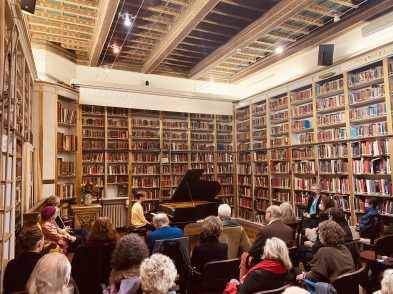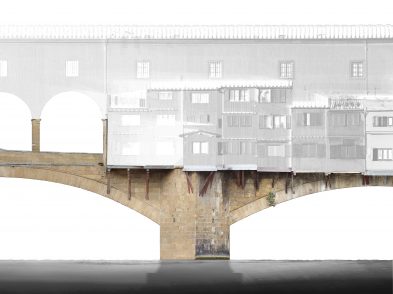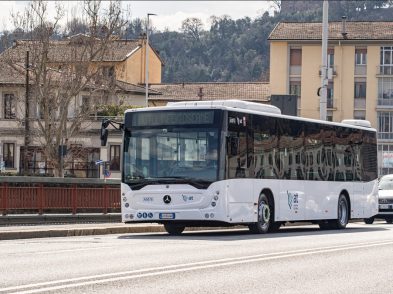As a person of Jewish heritage living in Tuscany, it is always very moving to be confronted with the realities of many who made their lives in these parts in past centuries. The idea of a Jewish Ghetto, with the word “Ghetto” itself originating in this part of the world, in Venice in 1516, conjures myriad thoughts and feelings. The word “Ghetto” has arguably come to symbolize the negative, whether that of the rounding up of Jews in line for deportation and extermination during the Second World War, or to identify various cultures and societies in modern-day America in derogatory terms. There are several theories as to the origins of the word, but the most commonly accepted one is that the word comes from the word gettare, to throw away. In 16th-century Venice there was a small island where unusable remnants of metal production were “thrown away” and this island was assigned to newly arrived Jews from all over Italy, Spain and northern Europe, both to keep them from mixing with the general populace and also to keep them safe from outside harm in their own environment. When the German Jews arrived in Venice in the 16th century, they couldn’t pronounce the soft “g” of gettare, so the “g” took on an “h” to become a hard “g” and the word Ghetto was born. Over the next centuries, Jewish Ghettos popped up all over Italy and elsewhere, the most famous and nefarious and destructive being those enclosures throughout Europe during the Second World War.

In Florence and Siena, there are records of Jewish presence dating back to the 13th century and, much like later arrivals to Venice, the residents were of northern European, Spanish and Italian origins. In Siena, a banking capital like Florence, Jews established their own bank in the early 1300s and a school of Jewish learning was established in the city a century later. Along with that also came a rise in antisemitism. While Jews were still free to mingle and work among the general public, they were required to wear yellow hats as a form of identification.
With Venice having set a standard, however complicated, for Jewish residency with its Ghetto in 1516, an overpopulated island subject to squalor and many rules, perhaps a type of open-air prison, Jews were allowed entry and exit during the day, but locked in at night. In 1554, Cosimo de’ Medici established a Jewish Ghetto in the heart of Florence (near today’s piazza della Repubblica) and, a year later, he conquered Siena and established a Jewish Ghetto just off the main piazza there. Somehow both imprisoned but also protected, the Jewish community grew and in the mid 1700s the establishment of the Synagogue of Siena attracted even more Jews. Following the Medici requirements, the synagogue was not to be “glorious” to the passerby, but almost undetectable. The standard, seemingly established in Venice, was to have the sanctuary not on the main floor, but one floor up, both out of sight, but also as a means of protection in case of attack. The Siena Synagogue was designed by Florentine Zanobi del Rosso and its interior is as elegant and beautiful as any other religious edifice created in Florence or Siena at the time.
When Napoleon arrived in the last decade of the 1700s with his motto “liberté, egalité, fraternité”, the Jews were finally emancipated, the Ghetto gates opened and Jews were allowed to be free in any part of the city, in Venice and other cities, and in 1799, in Siena. The Ghetto doors were burned in the main square of Siena, the piazza del Campo. Only several months later, however, an anti-French movement rounded up 13 Jews and burned them alive in the very same square.
The Jewish Ghetto of Siena nevertheless remained a refuge for Jews in Tuscany for the next 60 years until 1859 when the movement to unify Italy did away with the Ghetto and its rules for good, and Jews were finally integrated into Italian society. It was only in 1938 with the rise of fascism and the new “racial laws” that Jews were once again annihilated and, in 1943, deported and murdered in Auschwitz. After the war however, Jews did stay in the city, and the “hidden synagogue” survived with two plaques by its entrance, each commemorating the tragedies of 1799 and 1943.
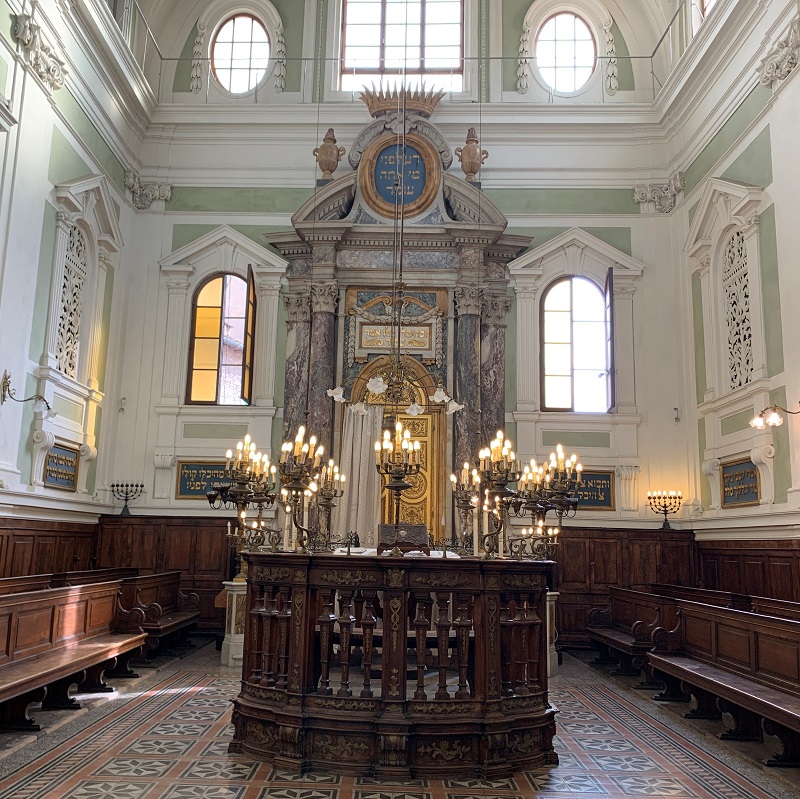
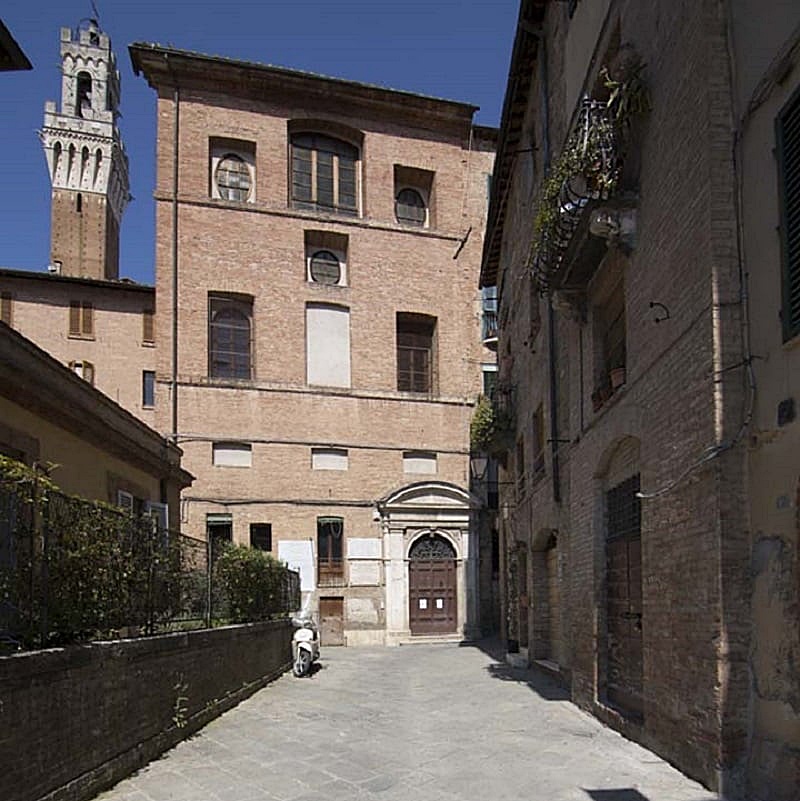
Today, the community is small but vibrant, wholly aware and proud of its heritage, and a very important part of Sienese and Italian culture. But on February 8, an earthquake shook Siena and significant damage was visited upon the historic synagogue. An international campaign to repair the damage and restore the synagogue to safety has begun. The first to commit support was the prestigious David Berg Foundation, which supports synagogue restoration projects around the world, through World Monuments Fund, an organization that works with local communities to safeguard sites of irreplaceable value; the Società Israelitica di Misericordia di Siena, an organization that works locally to protect Jewish heritage sites in Siena; and the Fondazione Beni Culturali Ebraici in Italia.
During the 24th edition of the European Day of Jewish Culture, held in Siena on September 10, the Jewish Community of Florence and Siena presented the emergency stabilization and restoration plan and international fundraising campaign aimed at raising funds to cover the costs of the second phase of the project. The project was presented to the city of Siena with the support and participation of Nicoletta Fabio, the city’s mayor, and representatives from local institutions and foundations, including the Foundation Monte dei Paschi di Siena.
Donations can be made here to support the urgent stabilization and restoration work to reopen the prayer hall, which was closed for safety reasons following the earthquake. Every aspect of Italian heritage and culture is important. The value of saving even a small part of our history, as it is with every culture that makes up the vast Italian landscape, is important for Italy as one of the world’s greatest tapestries consisting of strands of all colours whose beauty resonates around the globe.



